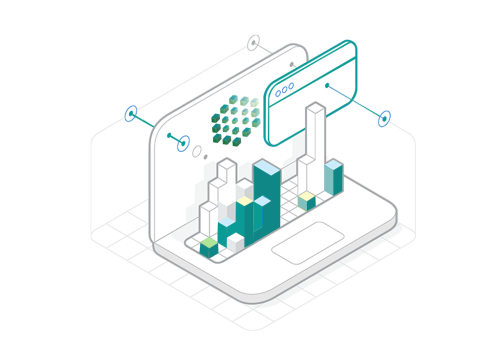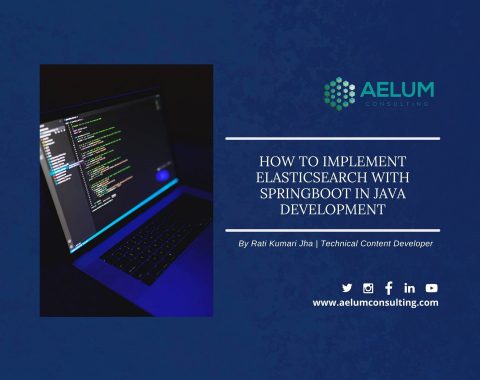
How To Choose A Right Software Development Company
In the present scenario, the demand for technology is surging at a fast
Digital transformation allows companies to automate most of the processes digitally. Digital transformation varies in different organizations as per their diversion to the technologies. Many organizations are moving towards AI and machine learning for their digital transformation.

Digital transformation allows companies to automate most of the processes digitally. Digital transformation varies in different organizations as per their diversion to the technologies. Many organizations are moving towards AI and machine learning for their digital transformation.
We provide consulting services to organizations. We help organizations in integrating the new emerging technologies into their ecosystem, defining the future of the companies by inducing the digital transformation capabilities into it.

When it comes to delivering frictionless customer service, there’s no silver bullet. But there are ways to optimize the process. Empowering customers to get quick answers to common questions is one of them.
When it comes to delivering frictionless customer service, there’s no silver bullet. But there are ways to optimize the process. Empowering customers to get quick answers to common questions is one of them.
When it comes to delivering frictionless customer service, there’s no silver bullet. But there are ways to optimize the process. Empowering customers to get quick answers to common questions is one of them.
When it comes to delivering frictionless customer service, there’s no silver bullet. But there are ways to optimize the process. Empowering customers to get quick answers to common questions is one of them.


When it comes to delivering frictionless customer service, there’s no silver bullet. But there are ways to optimize the process. Empowering customers to get quick answers to common questions is one of them.

When it comes to delivering frictionless customer service, there’s no silver bullet. But there are ways to optimize the process. Empowering customers to get quick answers to common questions is one of them.

When it comes to delivering frictionless customer service, there’s no silver bullet. But there are ways to optimize the process. Empowering customers to get quick answers to common questions is one of them.

When it comes to delivering frictionless customer service, there’s no silver bullet. But there are ways to optimize the process. Empowering customers to get quick answers to common questions is one of them.




When implementing ServiceNow IT Service Management, we focus on creating great experiences, continuous improvement, intelligent automation, high-quality data, and staying out-of-the-box (OOTB).
Aelum Consulting is a premier ServiceNow implementation partner which combines transformation capabilities with a customer-centric approach. We are providing end-to-end solutions around ServiceNow ITSM Process, Service Now Implementation,
Aelum Consulting is a premier ServiceNow implementation partner which combines transformation capabilities with a customer-centric approach. We are providing end-to-end solutions around ServiceNow ITSM Process, Service Now Implementation,
Aelum Consulting is a premier ServiceNow implementation partner which combines transformation capabilities with a customer-centric approach. We are providing end-to-end solutions around ServiceNow ITSM Process, Service Now Implementation,
Aelum Consulting is a premier ServiceNow implementation partner which combines transformation capabilities with a customer-centric approach. We are providing end-to-end solutions around ServiceNow ITSM Process, Service Now Implementation,
Aelum Consulting is a premier ServiceNow implementation partner which combines transformation capabilities with a customer-centric approach. We are providing end-to-end solutions around ServiceNow ITSM Process, Service Now Implementation,
Aelum Consulting is a premier ServiceNow implementation partner which combines transformation capabilities with a customer-centric approach. We are providing end-to-end solutions around ServiceNow ITSM Process, Service Now Implementation,
When implementing ServiceNow IT Service Management, we focus on creating great experiences, continuous improvement, intelligent automation, high-quality data, and staying out-of-the-box (OOTB).
On average, for an organization of 500-8000 employees, an ITSM implementation takes between 8-12 weeks to deliver a first MVP. With each organization being unique, there are exceptions to this rule of thumb. On average, for an organization of 500-8000 employees, an ITSM implementation takes between 8-12 weeks to deliver a first MVP. With each organization being unique, there are exceptions to this rule of thumb.
On average, for an organization of 500-8000 employees, an ITSM implementation takes between 8-12 weeks to deliver a first MVP. With each organization being unique, there are exceptions to this rule of thumb. On average, for an organization of 500-8000 employees, an ITSM implementation takes between 8-12 weeks to deliver a first MVP. With each organization being unique, there are exceptions to this rule of thumb.
On average, for an organization of 500-8000 employees, an ITSM implementation takes between 8-12 weeks to deliver a first MVP. With each organization being unique, there are exceptions to this rule of thumb. On average, for an organization of 500-8000 employees, an ITSM implementation takes between 8-12 weeks to deliver a first MVP. With each organization being unique, there are exceptions to this rule of thumb.
On average, for an organization of 500-8000 employees, an ITSM implementation takes between 8-12 weeks to deliver a first MVP. With each organization being unique, there are exceptions to this rule of thumb. On average, for an organization of 500-8000 employees, an ITSM implementation takes between 8-12 weeks to deliver a first MVP. With each organization being unique, there are exceptions to this rule of thumb.
On average, for an organization of 500-8000 employees,
On average, for an organization of 500-8000 employees, an ITSM implementation takes between 8-12 weeks to deliver a first MVP. With each organization being unique, there are exceptions to this rule of thumb. On average, for an organization of 500-8000 employees, an ITSM implementation takes between 8-12 weeks to deliver a first MVP. With each organization being unique, there are exceptions to this rule of thumb.
On average, for an organization of 500-8000 employees,
On average, for an organization of 500-8000 employees, an ITSM implementation takes between 8-12 weeks to deliver a first MVP. With each organization being unique, there are exceptions to this rule of thumb. On average, for an organization of 500-8000 employees, an ITSM implementation takes between 8-12 weeks to deliver a first MVP. With each organization being unique, there are exceptions to this rule of thumb.
On average, for an organization of 500-8000 employees,
On average, for an organization of 500-8000 employees, an ITSM implementation takes between 8-12 weeks to deliver a first MVP. With each organization being unique, there are exceptions to this rule of thumb. On average, for an organization of 500-8000 employees, an ITSM implementation takes between 8-12 weeks to deliver a first MVP. With each organization being unique, there are exceptions to this rule of thumb.
On average, for an organization of 500-8000 employees,
On average, for an organization of 500-8000 employees, an ITSM implementation takes between 8-12 weeks to deliver a first MVP. With each organization being unique, there are exceptions to this rule of thumb. On average, for an organization of 500-8000 employees, an ITSM implementation takes between 8-12 weeks to deliver a first MVP. With each organization being unique, there are exceptions to this rule of thumb.
On average, for an organization of 500-8000 employees, an ITSM implementation takes between 8-12 weeks to deliver a first MVP. With each organization being unique, there are exceptions to this rule of thumb. On average, for an organization of 500-8000 employees, an ITSM implementation takes between 8-12 weeks to deliver a first MVP. With each organization being unique, there are exceptions to this rule of thumb.
On average, for an organization of 500-8000 employees, an ITSM implementation takes between 8-12 weeks to deliver a first MVP. With each organization being unique, there are exceptions to this rule of thumb. On average, for an organization of 500-8000 employees, an ITSM implementation takes between 8-12 weeks to deliver a first MVP. With each organization being unique, there are exceptions to this rule of thumb.
On average, for an organization of 500-8000 employees, an ITSM implementation takes between 8-12 weeks to deliver a first MVP. With each organization being unique, there are exceptions to this rule of thumb. On average, for an organization of 500-8000 employees, an ITSM implementation takes between 8-12 weeks to deliver a first MVP. With each organization being unique, there are exceptions to this rule of thumb.
On average, for an organization of 500-8000 employees, an ITSM implementation takes between 8-12 weeks to deliver a first MVP. With each organization being unique, there are exceptions to this rule of thumb. On average, for an organization of 500-8000 employees, an ITSM implementation takes between 8-12 weeks to deliver a first MVP. With each organization being unique, there are exceptions to this rule of thumb.















The implementation of ServiceNow IRM in an organization typically involves the following steps:
1.
Define the goals and objectives for the IRM implementation and determine the specific requirements for the system. It includes data requirements, security requirements, and integration requirements.


2.
Set up the IRM system by configuring settings, customizing templates and forms, and defining workflows and processes.
3.
Migrate existing risk management data into the IRM system, including information about assets, business processes, risks, and mitigation plans.


4.
Train relevant users on how to use the IRM system, including how to perform risk assessments, create mitigation plans, and monitor risk.
5.
Integrate the IRM system with other relevant systems and tools. For example, incident management, change management, or compliance management systems.


6.
Test the IRM system to ensure it is functioning as expected and make any necessary adjustments.
7.
Deploy the IRM system in a phased approach, starting with a small group of users and gradually expanding to include all relevant users.


8.
Monitor the IRM system on an ongoing basis, making any necessary updates and improvements. Also, ensure that the system remains relevant and effective in managing risk
















In the present scenario, the demand for technology is surging at a fast

Java and Elastic Search are some of the topmost technologies used by many

Introduction to Cloud Technologies are updating with a higher speed as per the